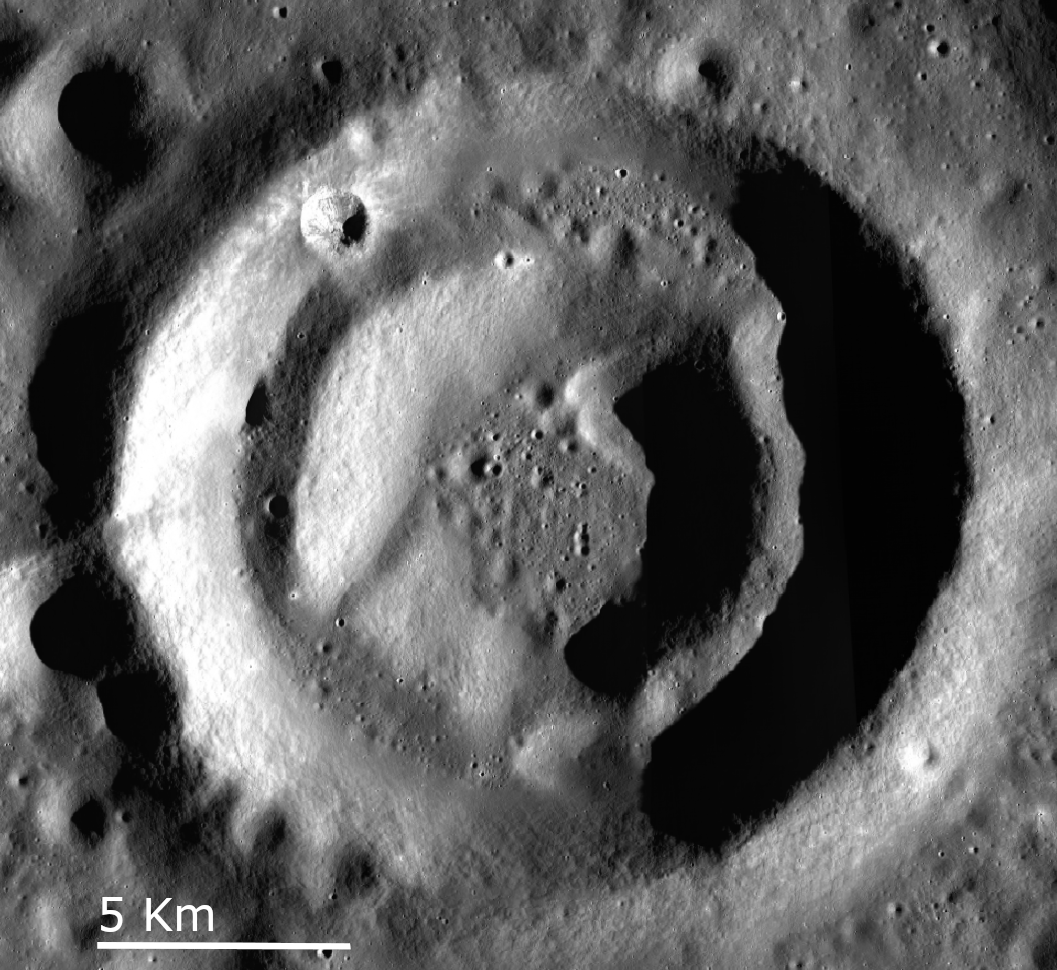
Impact craters dominate the lunar landscape. Most are shaped like circles, some like ovals, and there are even the occasional square craters. But sometimes, we find craters that look like donuts! Craters not only vary in shape but also in complexity. There are simple craters and complex craters with ring structures and mountains at the center. Somewhere in between is Bell E, a small crater located within the larger Bell crater. These donut-shaped formations are commonly known as concentric craters. Many questions remain on the origin of donut craters. While there have been several ideas about their origin, including double impacts, the currently favored hypotheses involve volcanic processes and compositional variations.
Controlled Feature Mosaics made from LROC Narrow Angle Camera (NAC) images allow us to take a closer look at these mysterious craters.
Hypothesis 1: Double Impact
Bullseye! One crater formed after an impactor hits the surface, then some time later, a smaller impactor approaches and creates a smaller crater, perfectly centered within the first.
However, this hypothesis has some drawbacks...
Firstly, if this was just the cause of two impactors hitting the same area, you would expect to find concentric craters randomly scattered around the lunar surface. However, these craters are not at all randomly placed.
The graphic below shows that many concentric "donut" craters are located around the edges Oceanus Procellarum (Ocean of Storms) as well as clustering in other places. These concentric craters appear to have formed more prominently around the transitional area between the Procellarum KREEP Terrane ( an area with a unique crustal composition of heat-producing elements, such as thorium and uranium) and the Lunar Highlands.
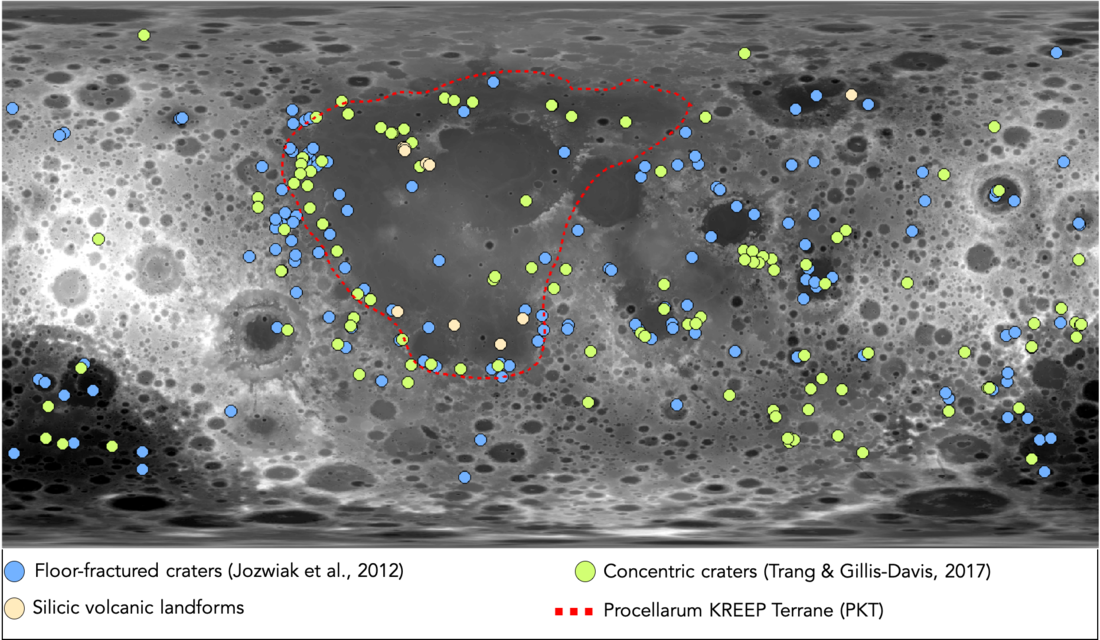
Secondly, these unusual craters all formed during the same time period. If these donut craters are formed as double impacts they should exhibit a broad range of ages. Yet we do not see donut craters less than a billion years old, nor more than 4 billion years old.
Lastly, measuring the elevations inside of a concentric crater like Bell E shows that the second “crater” is much too shallow to be an impact crater. Craters close to Bell E and of the same general size range (about 16km) are nearly twice the depth.
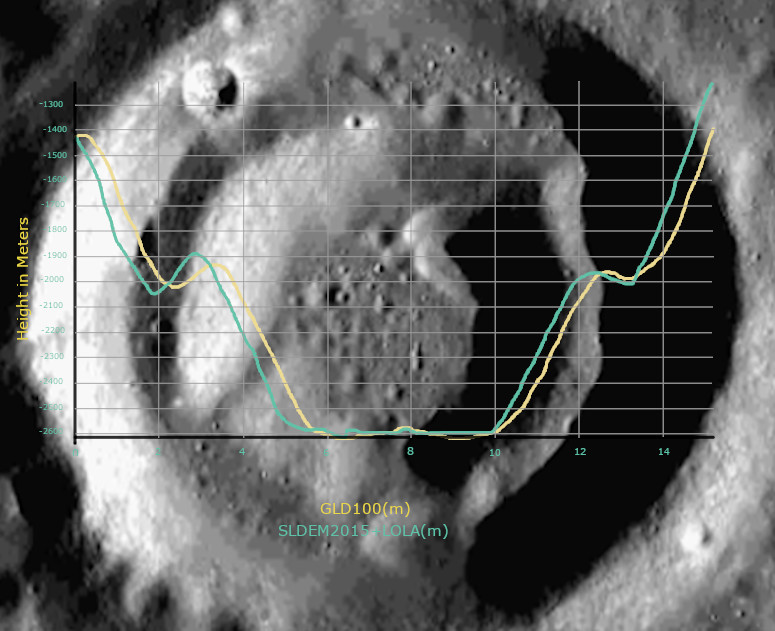
Hypothesis 2: Viscous Relaxation
The age range of these craters indicates they formed during a volcanically active period on the Moon; therefore, a heat source may also have been a factor for the subsequent donut shapes through a process called viscous relaxation. This means the double ring may have been the result of the initial impact. When matter has a consistency between a solid and liquid, described as “thick” or “sticky” it is known to have a high viscosity. In this case, the viscosity of the lunar surface would have been similar to honey. Just as material hitting the surface of honey would cause an initial crater, several ripples, and then rebound and smooth out again, the lunar surface may also have been able to do something similar, except the ripples remained and created the double ring effect. However, it is currently under examination whether the lunar surface was hot enough at the time to allow this process.
Hypothesis 3: Differential Densities
Perhaps these craters could have been created as a result of an impact into a weak surface layer overlying a stronger, denser layer. However, from visible image observations and Clementine data, these craters do not show compositional differences between the surrounding layer and inner crater. Additionally, if differential densities are the reason, other craters in their immediate areas would also exhibit these donut shapes, but they do not.
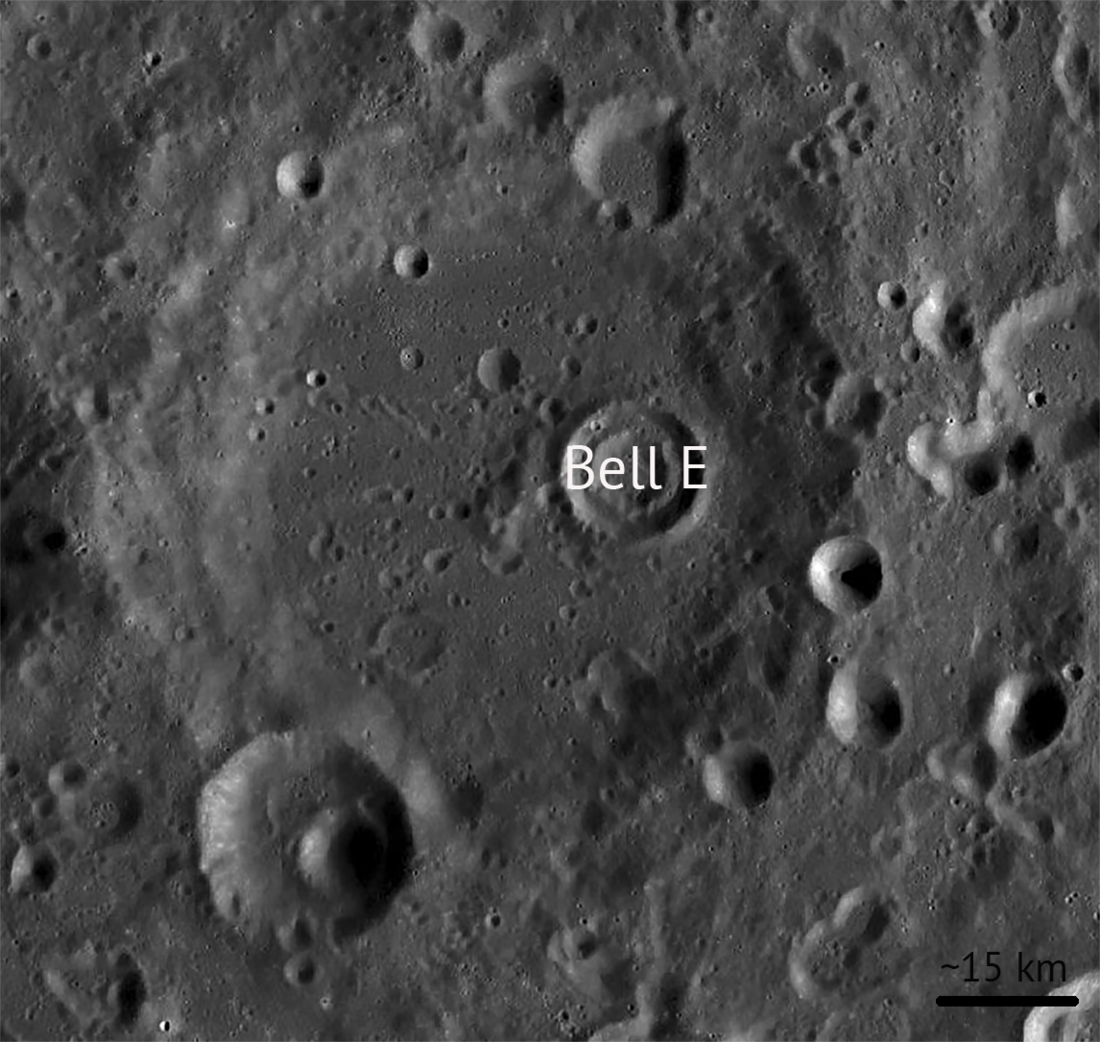
Hypothesis 4: Magmatic Intrusion
A magmatic intrusion occurs when magma (rock formed below the surface) crystallizes and pushes through the density differences to collide with surface material.
This hypothesis assumes the crater formed initially, and then an undetermined amount of time passed before the intruding magma from beneath the surface pushed up the crater floor. This would account for the shallowness of the crater floor, as well as the time period of their formation. Around the time these craters were forming, the Moon was still volcanically active and most donut-shaped craters are found in regions known to have had high amounts of volcanic activity. This hypothesis is currently favored among lunar geologists. While the other hypotheses have evidence against them, magmatic intrusion seems to be able to hold up against scrutiny for now.
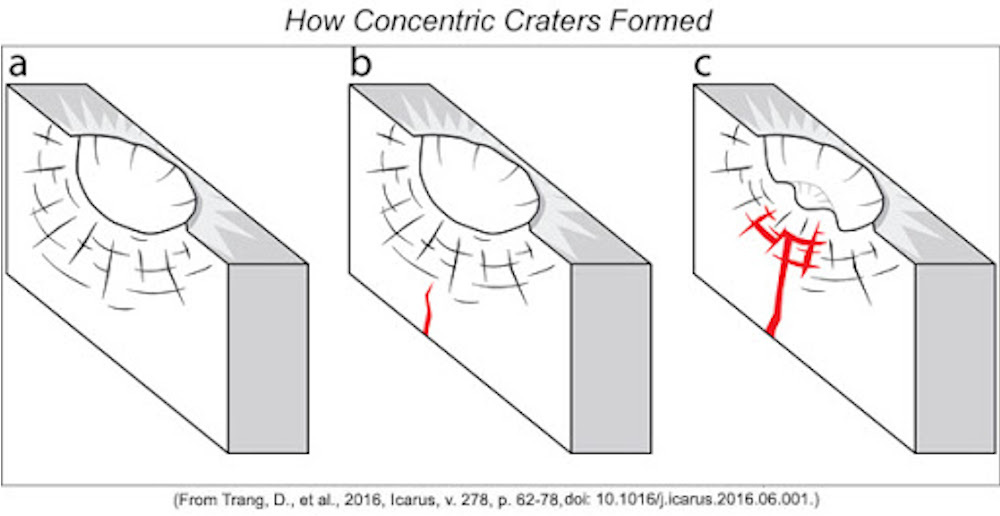
Whatever the case may be, the Bell E "donut" sure is beautiful! Check out this cool zoomify below!
Related Featured Images
Oblique Image of Concentric Crater
Download the Bell E Feature Mosaic. Bell E Crater
Learn more about controlled Feature Mosaics by reading Feature Mosaics: Behind the Seams
Published by Jessica Walsh on 2 October 2020